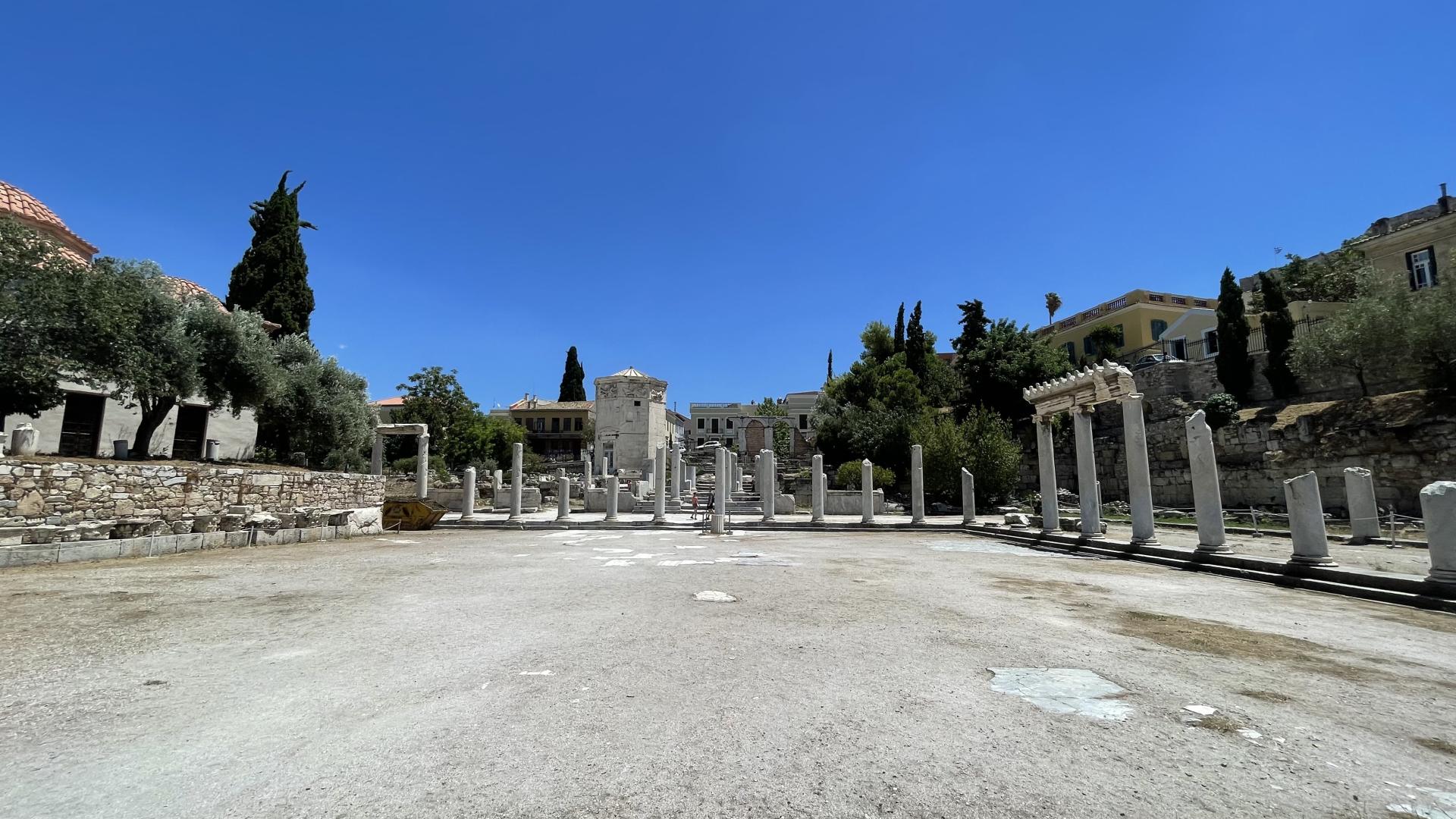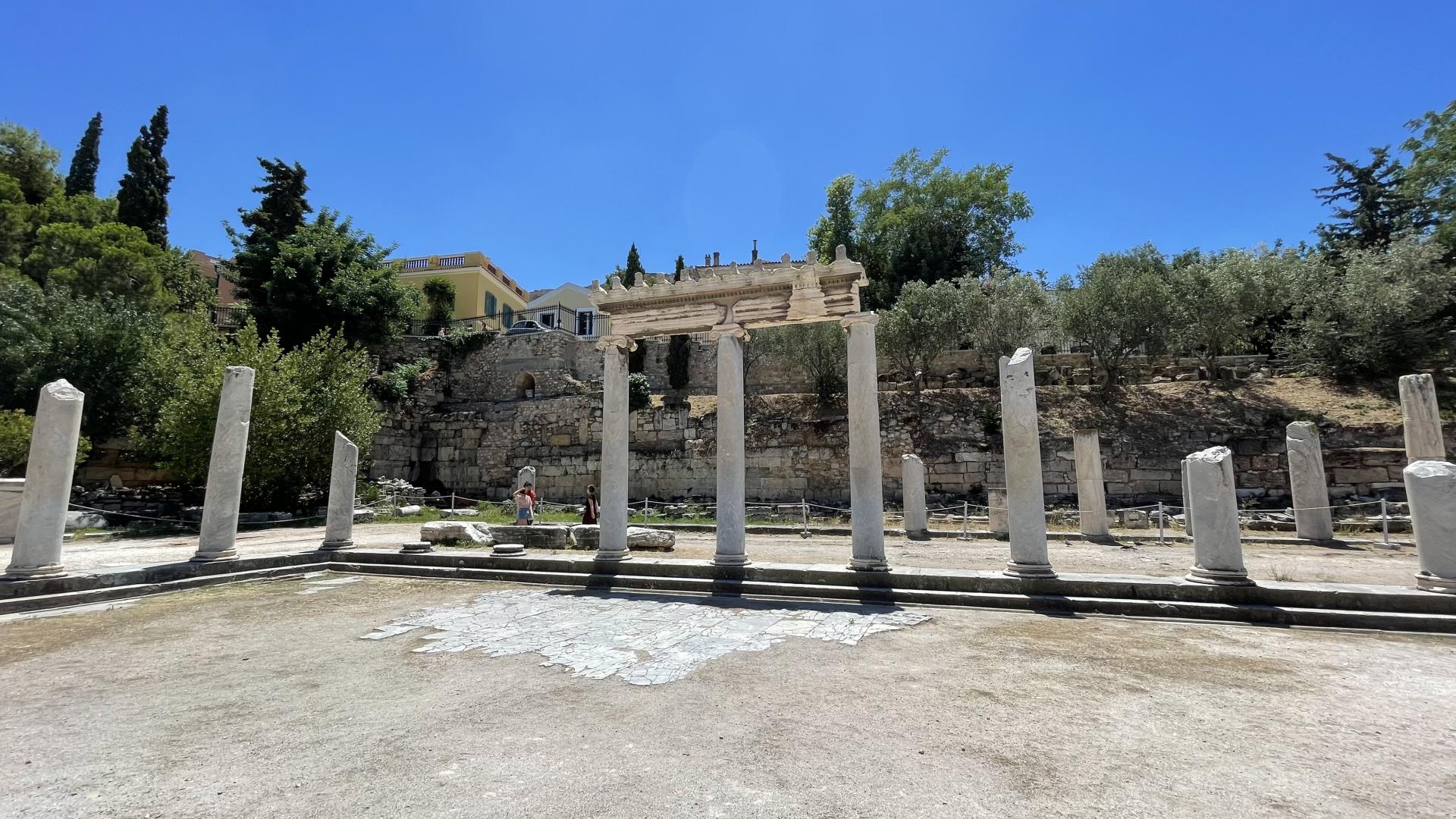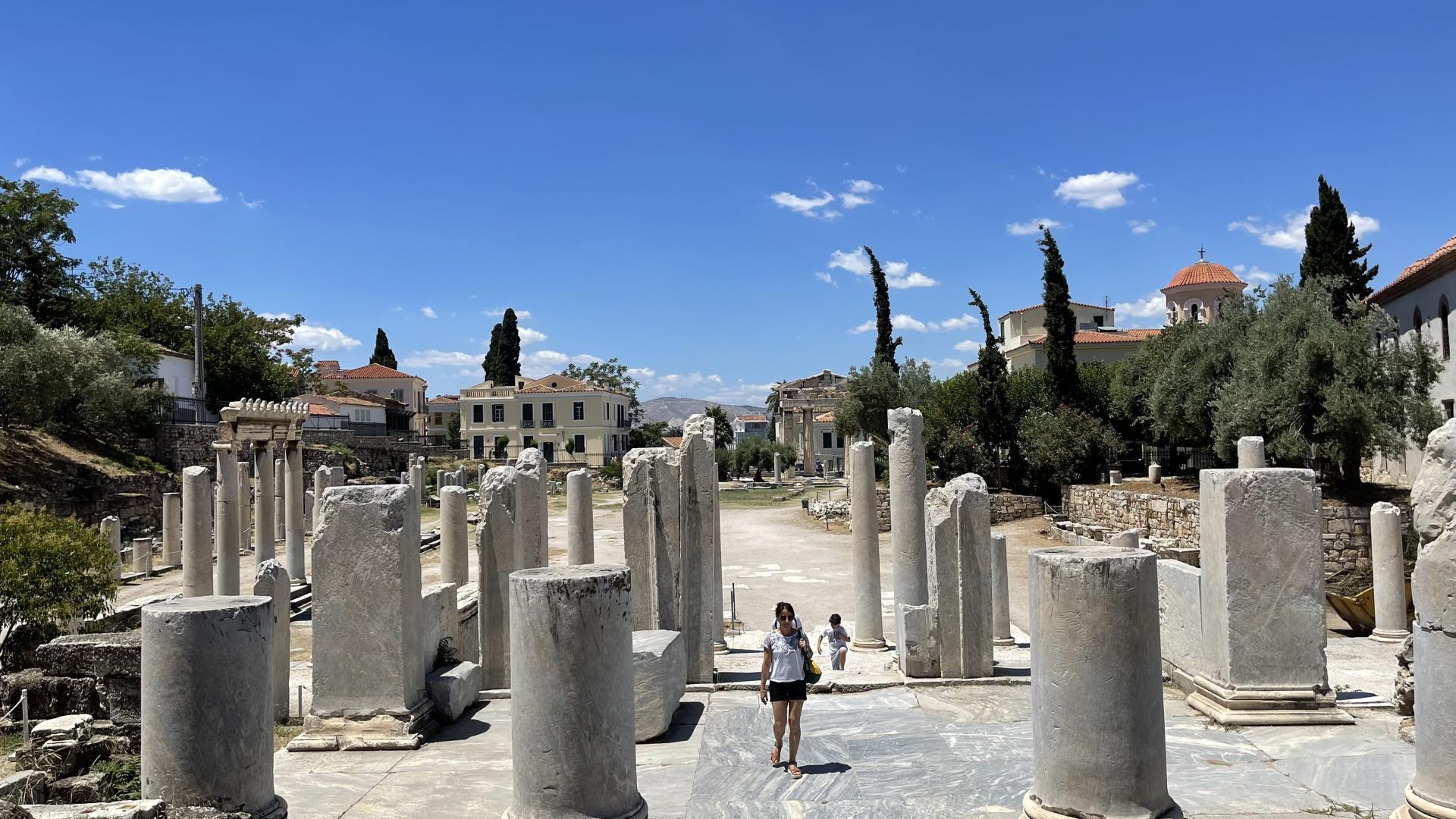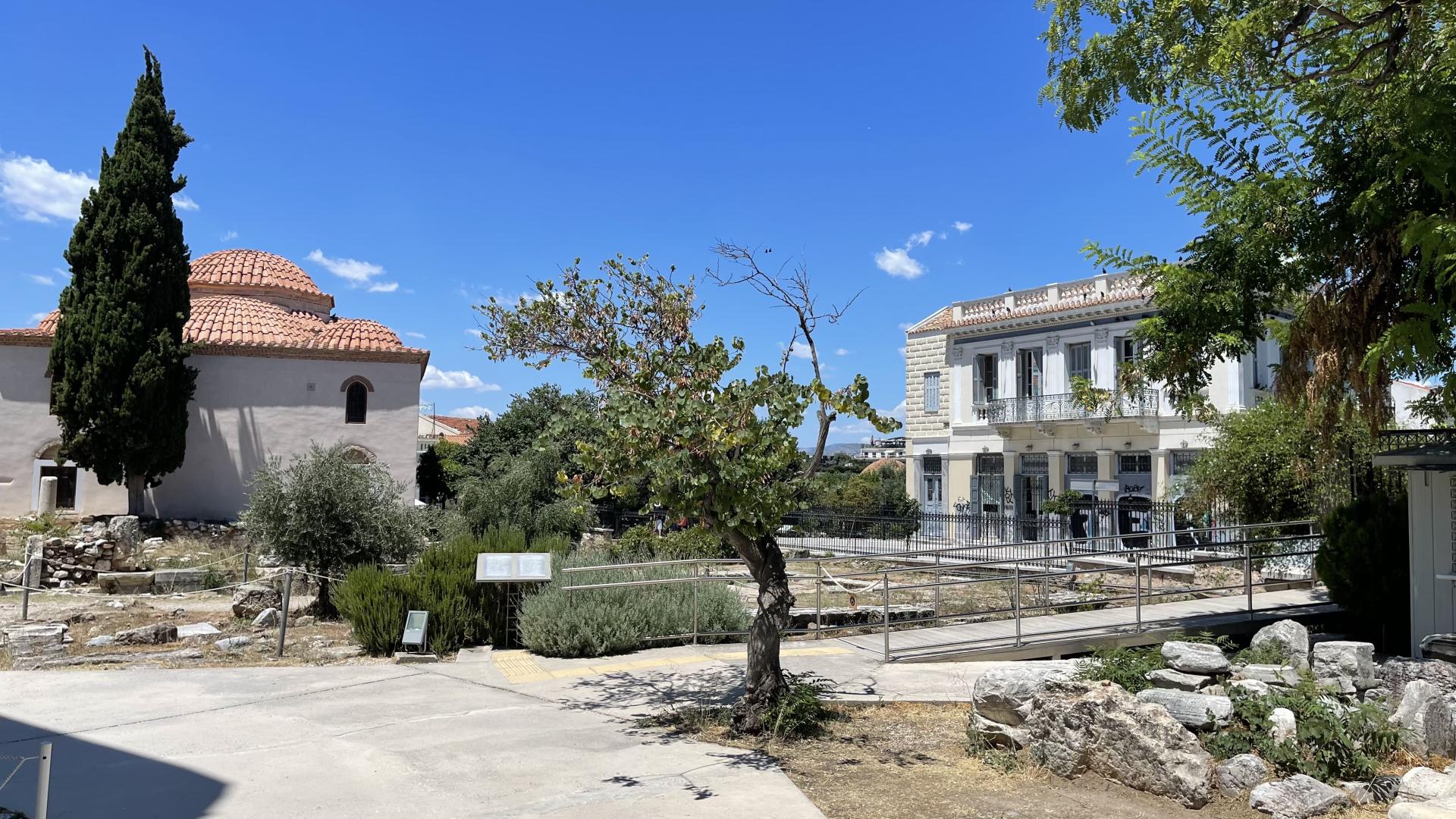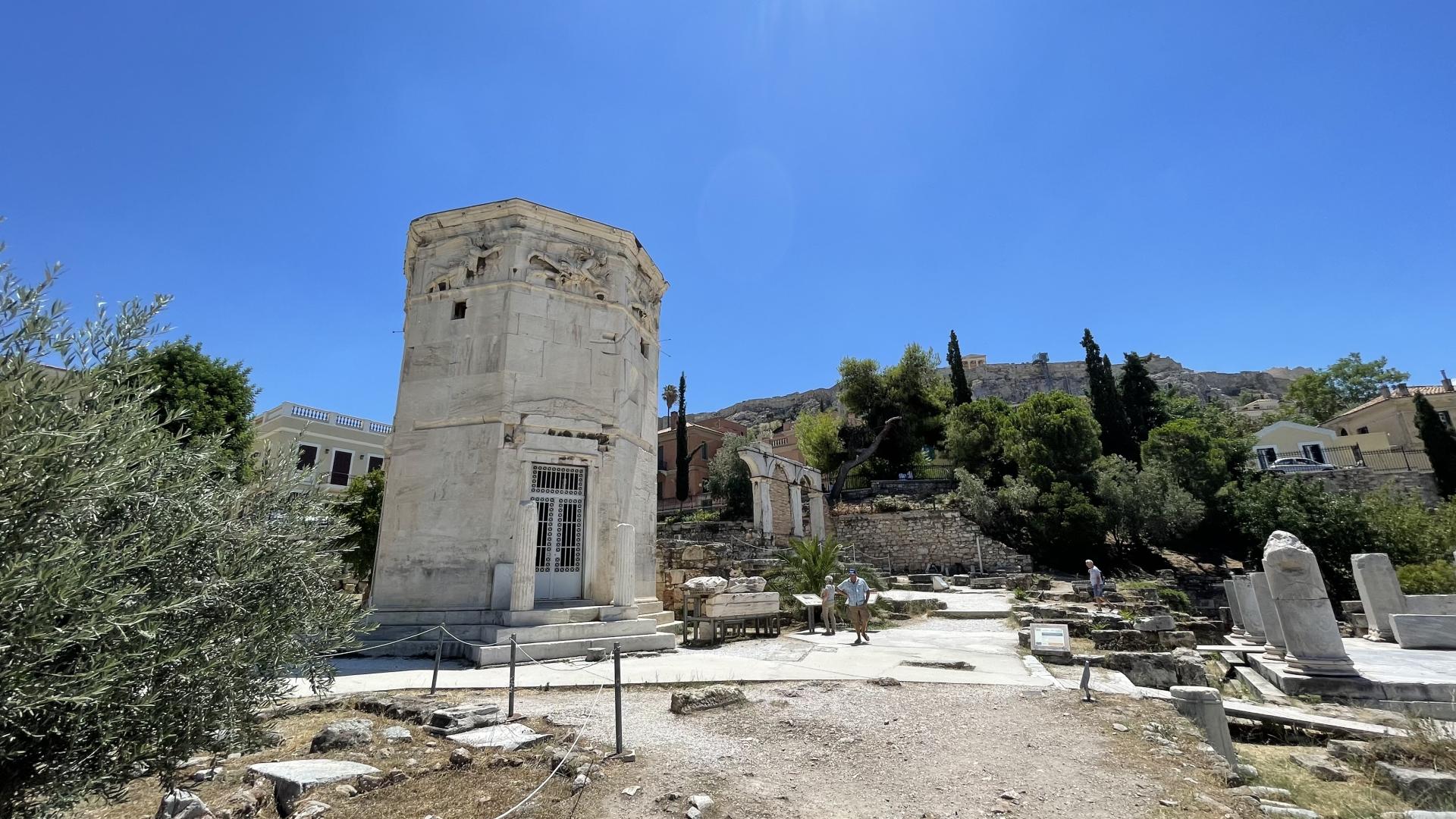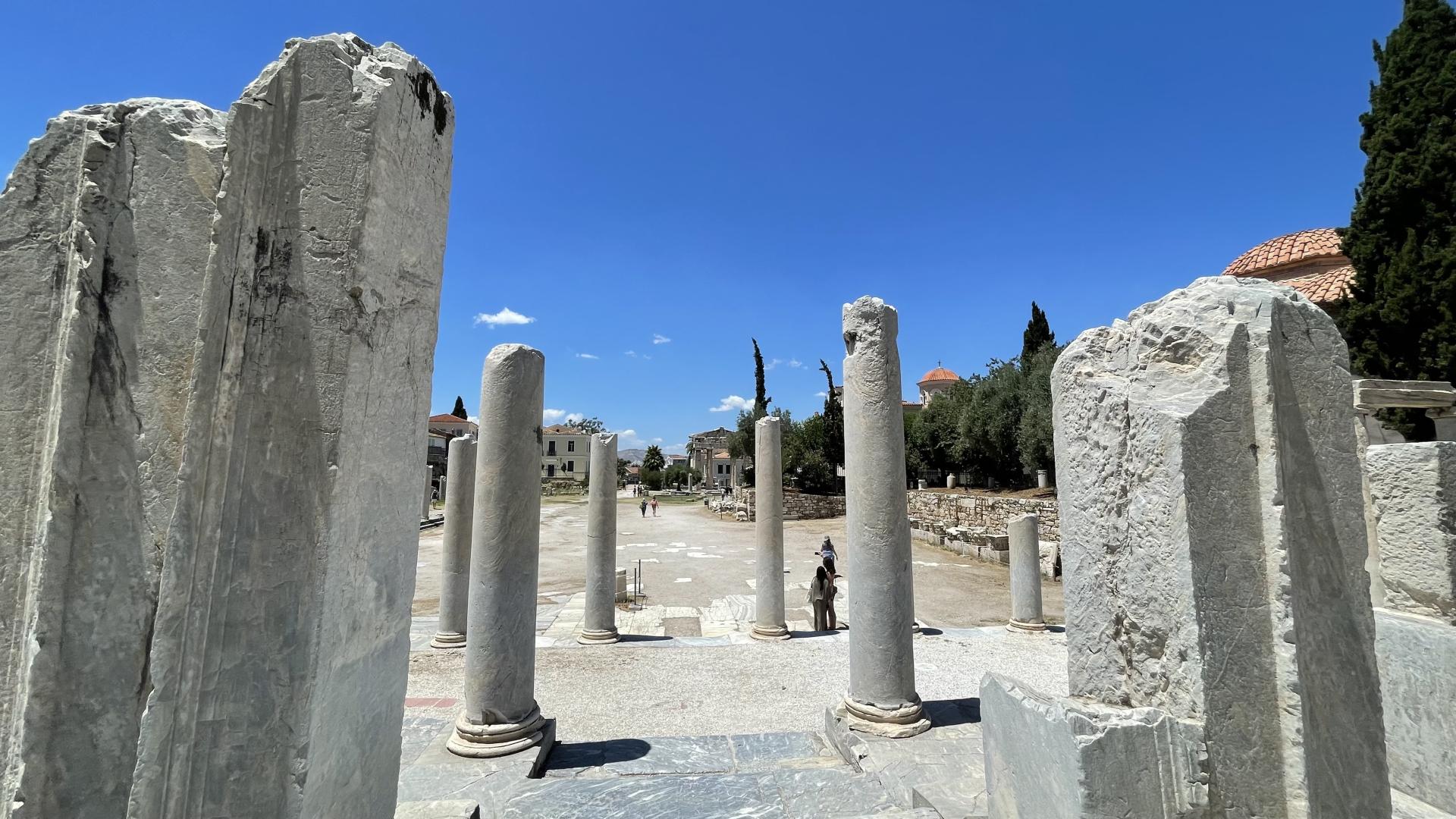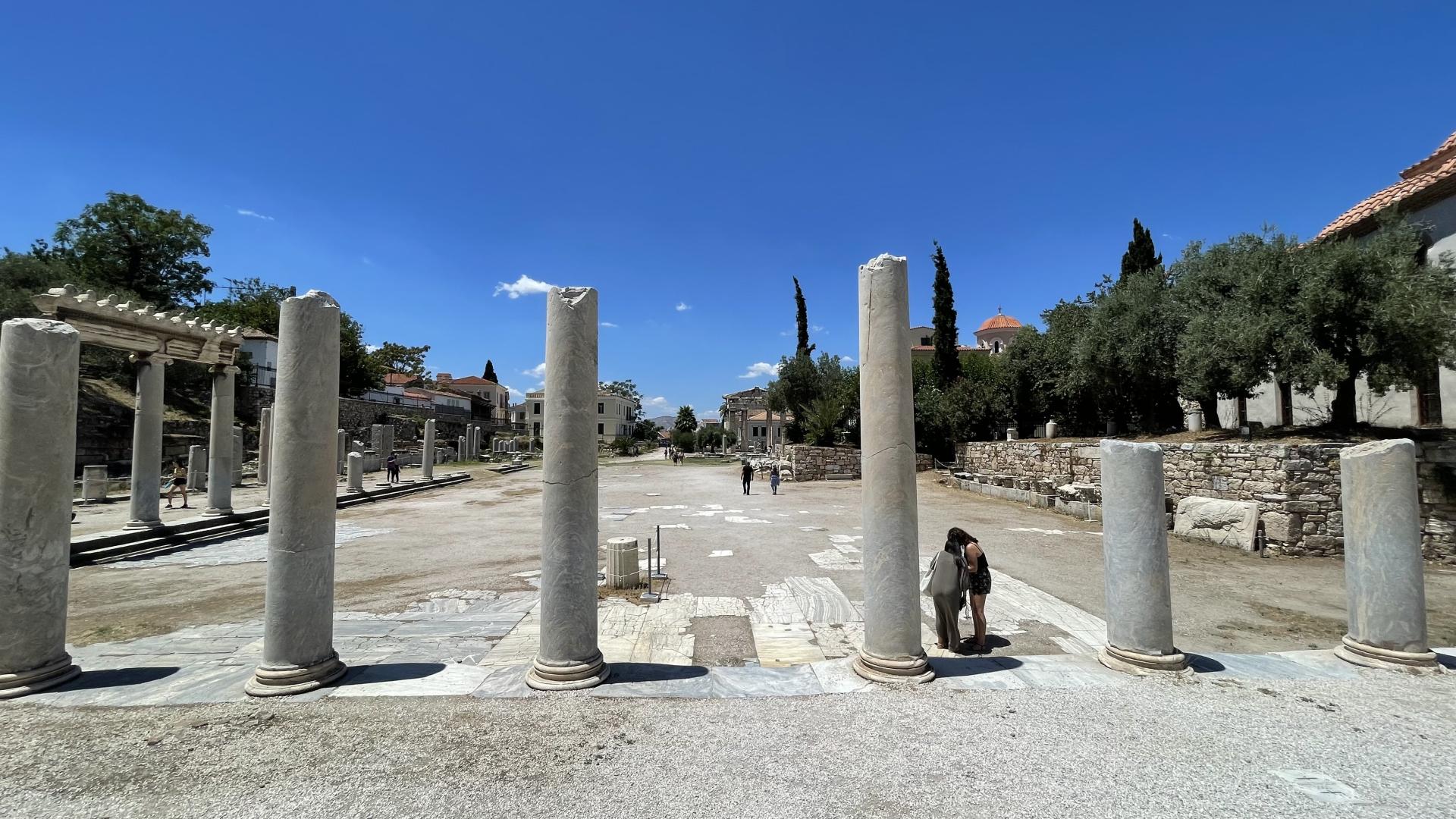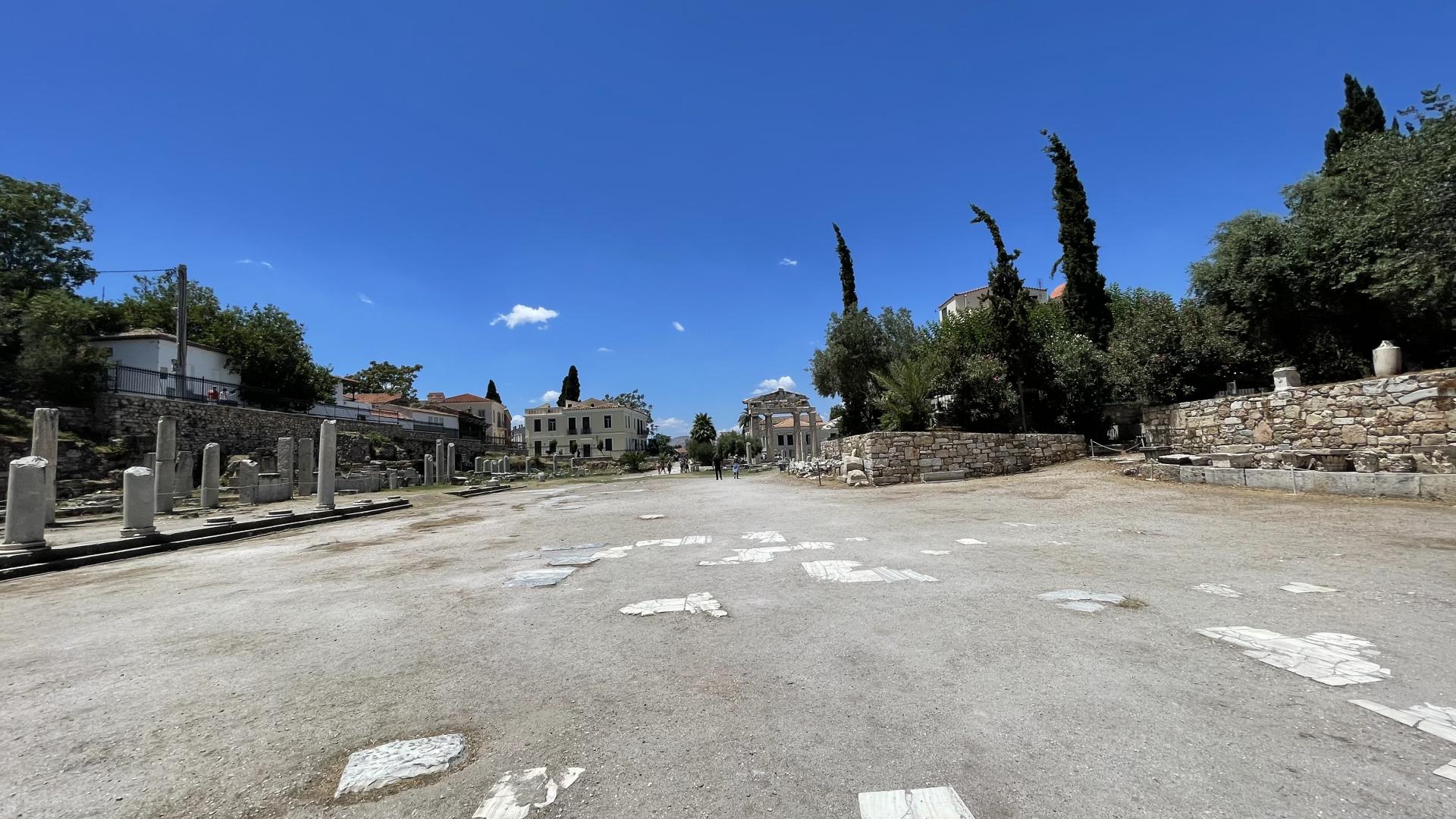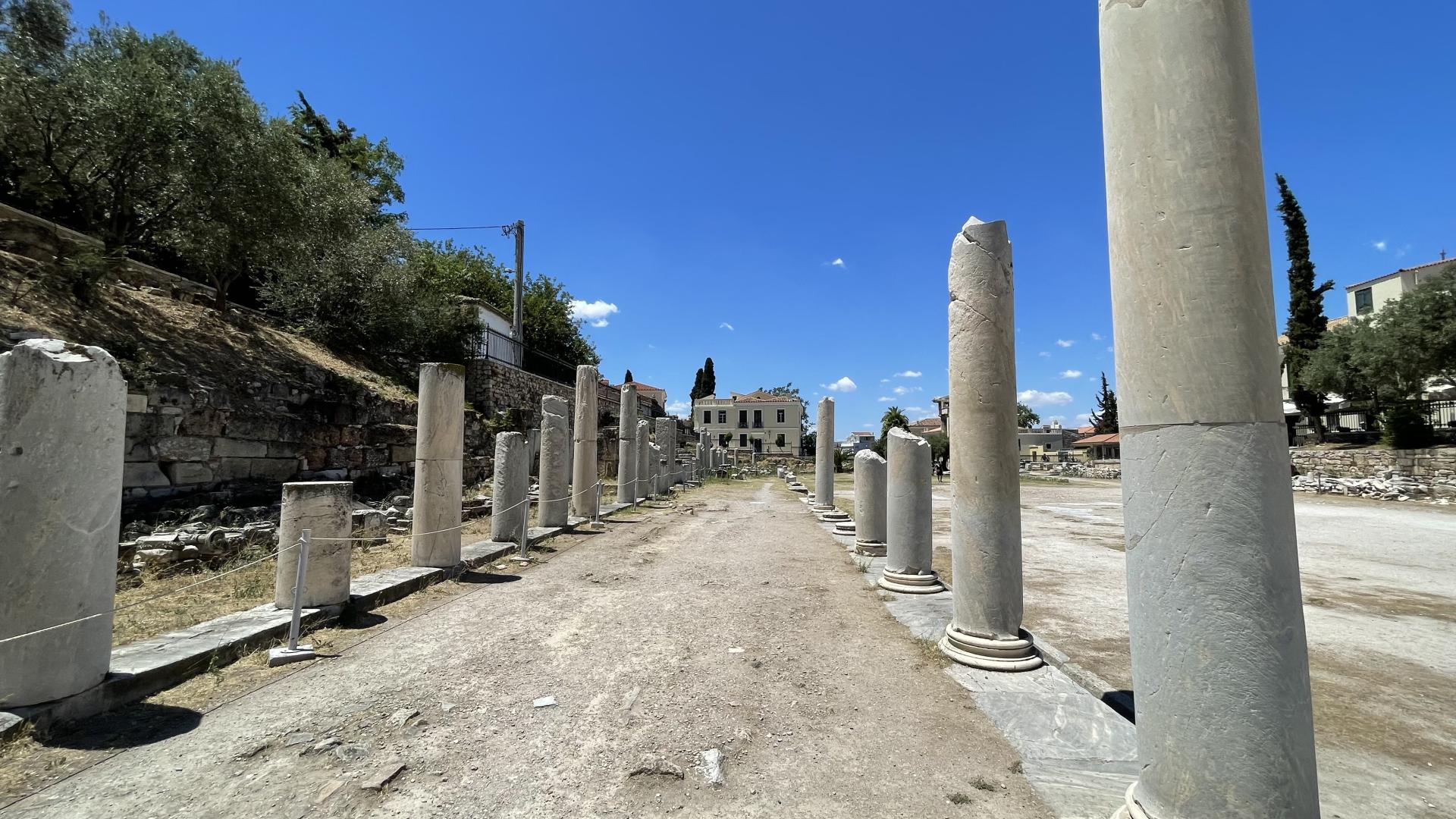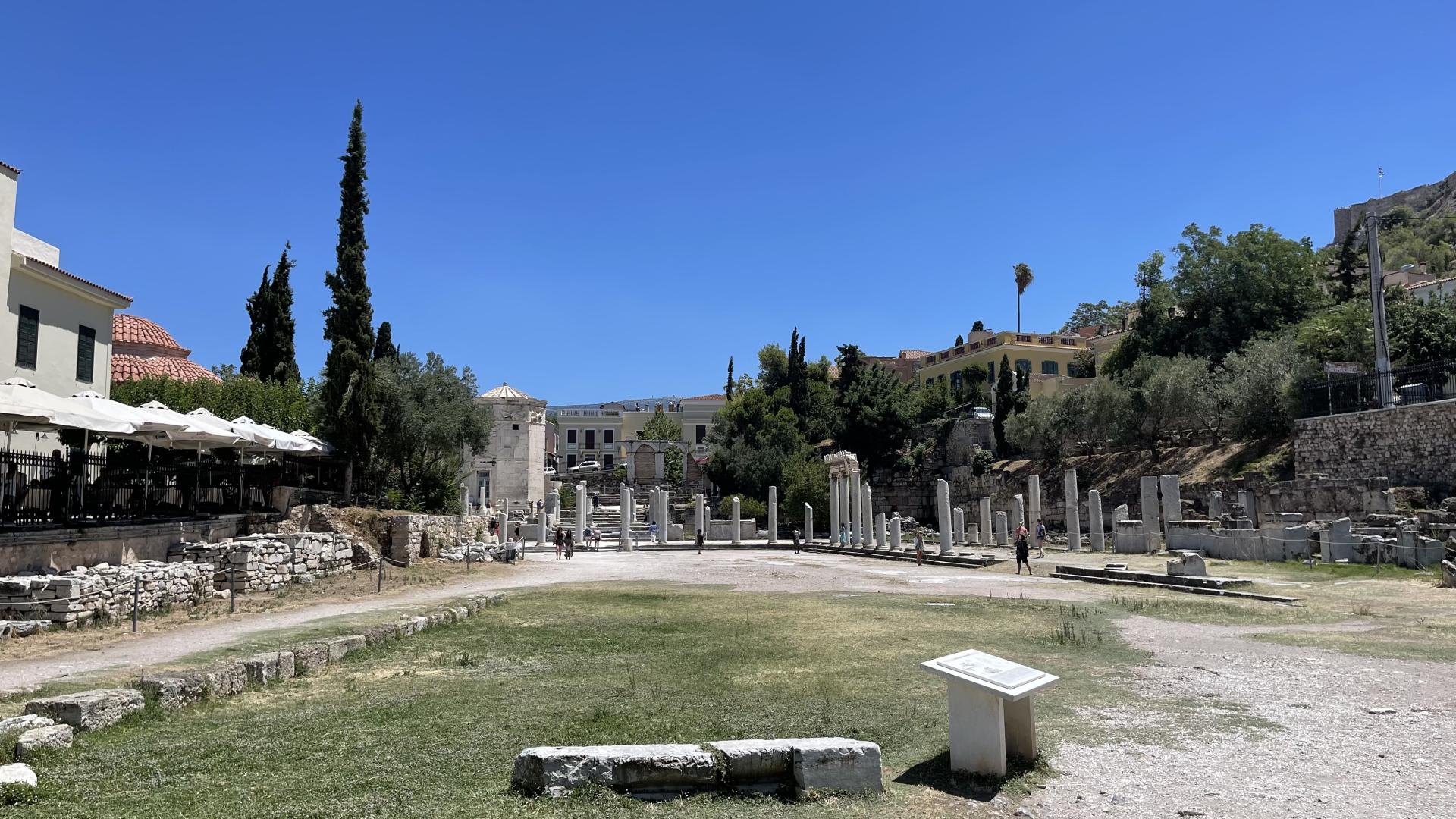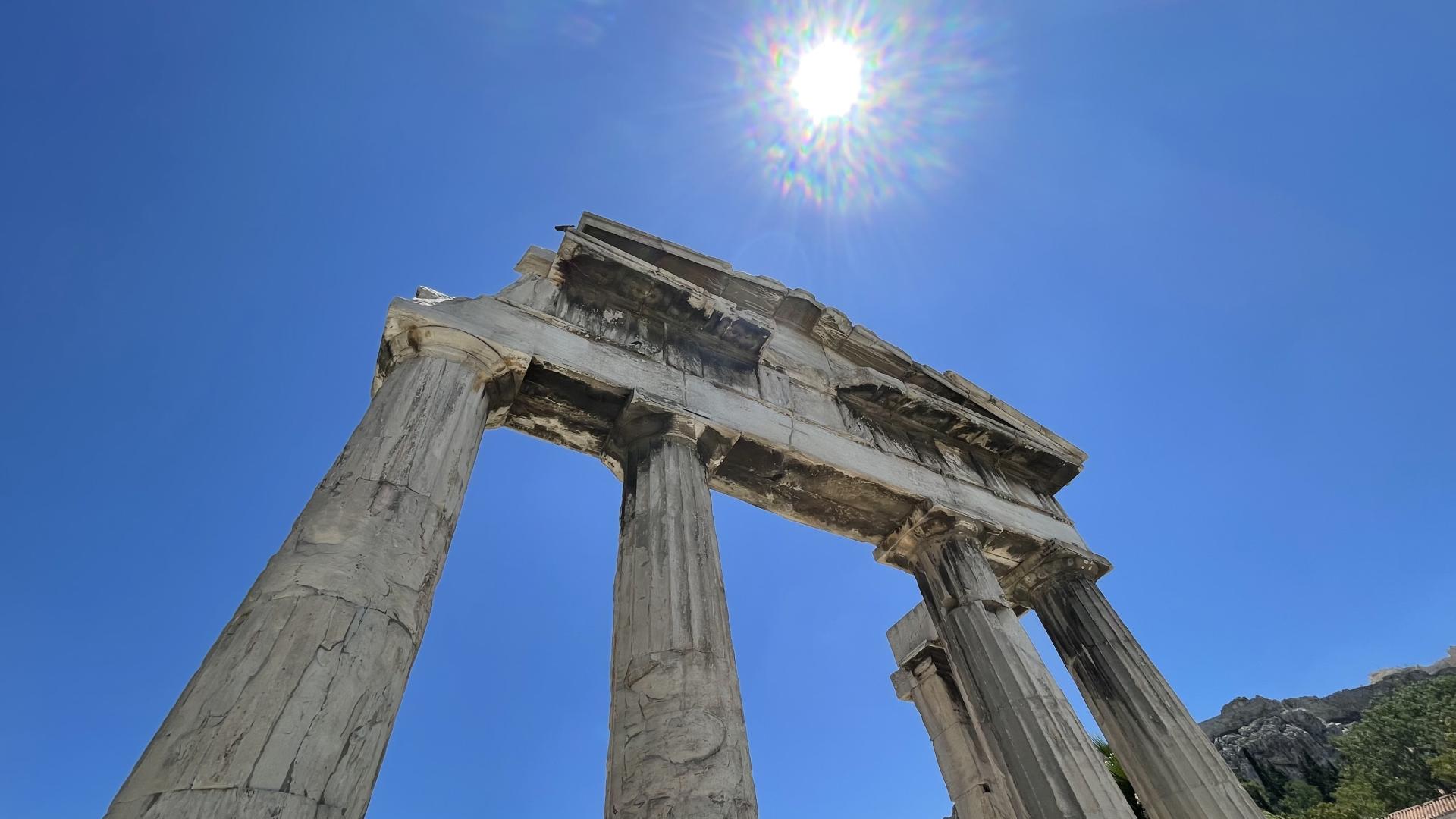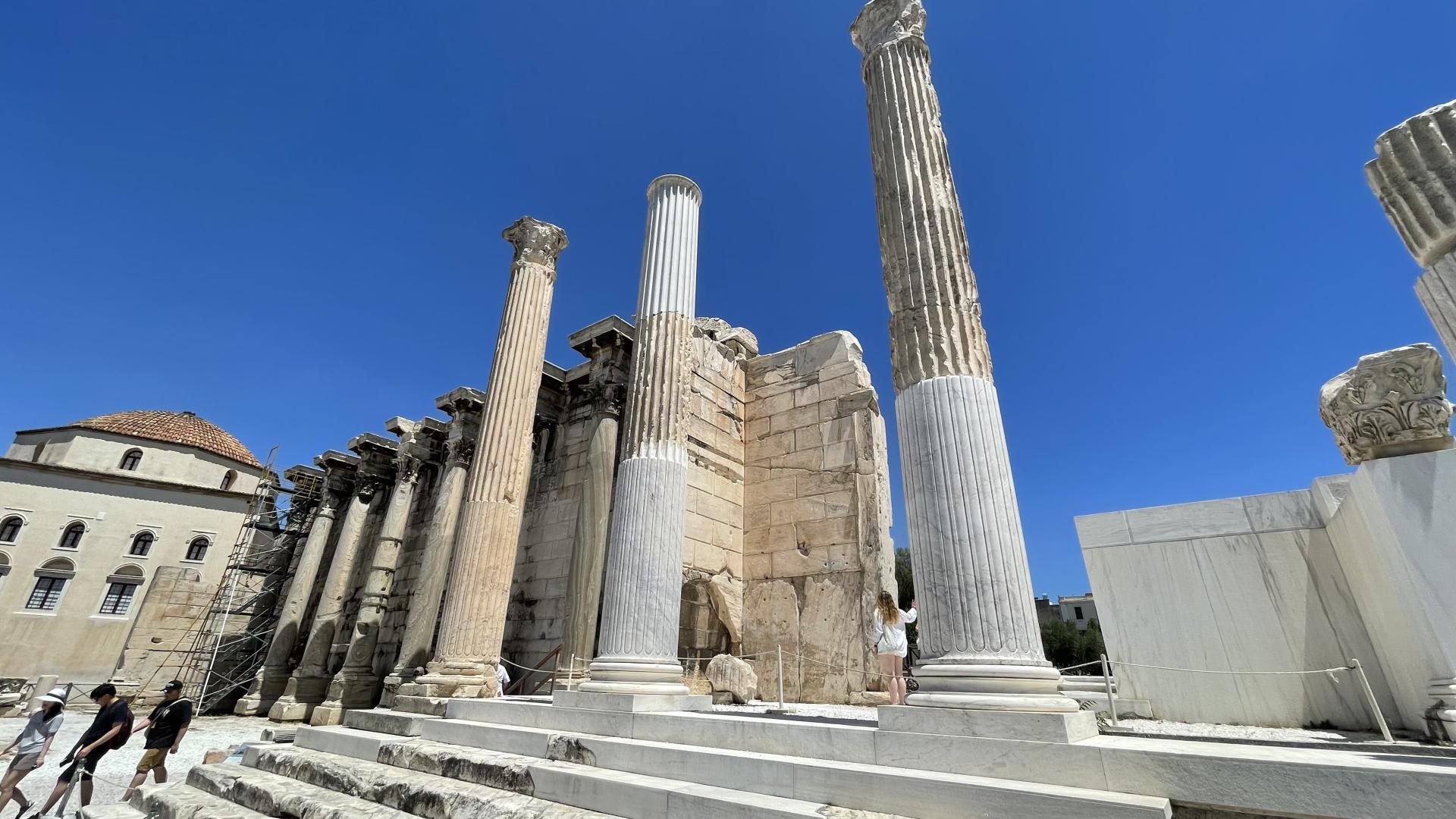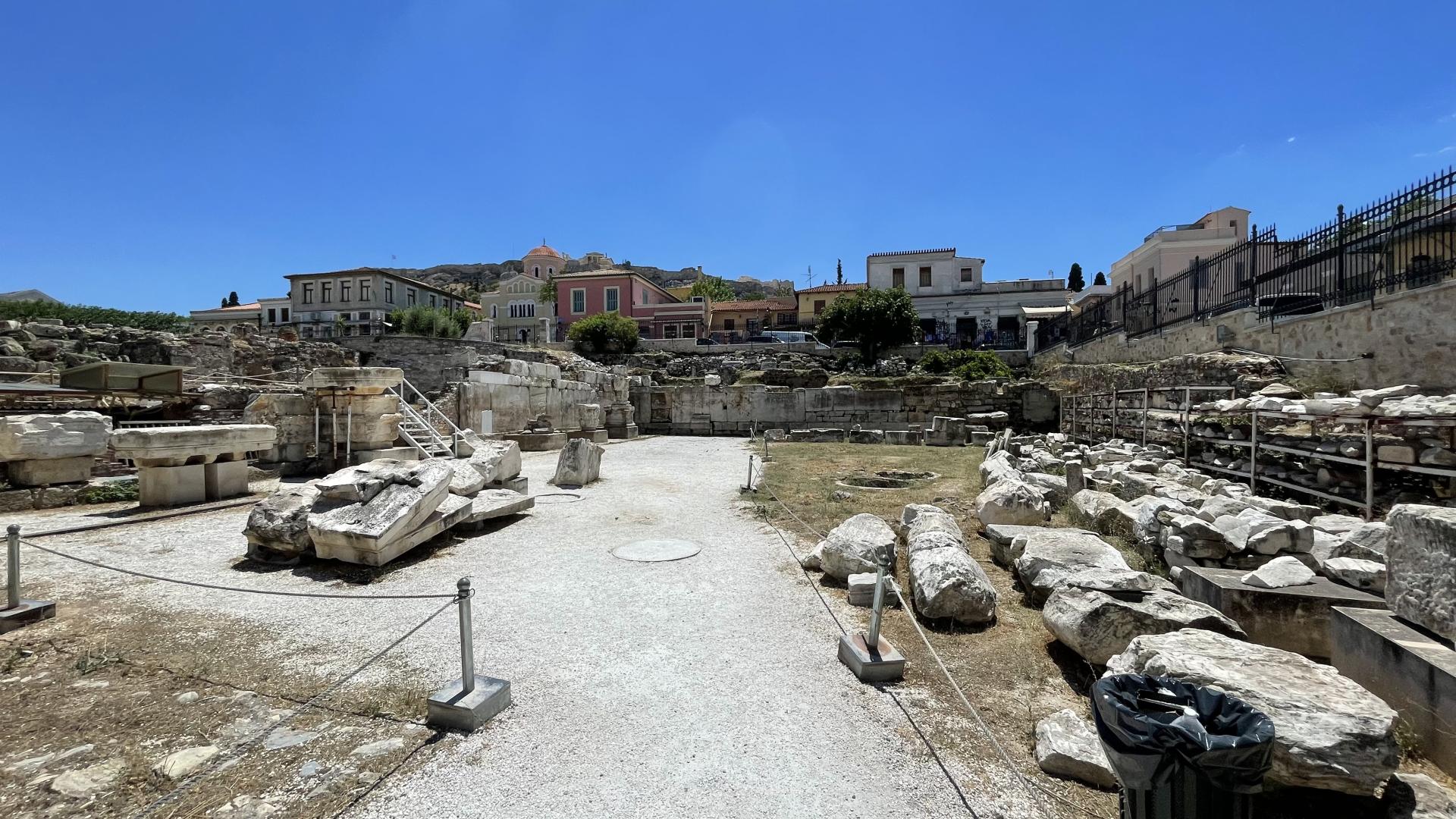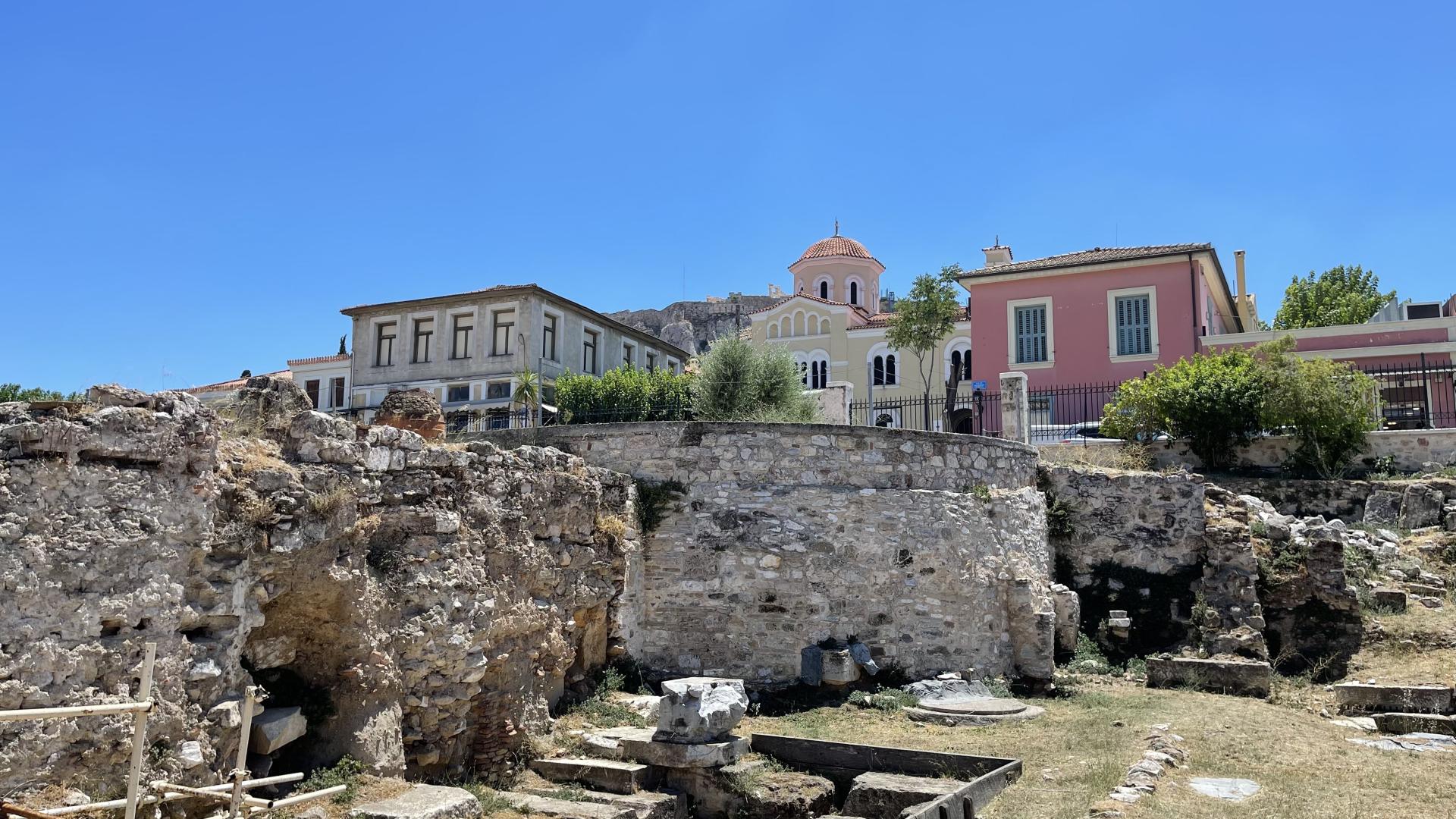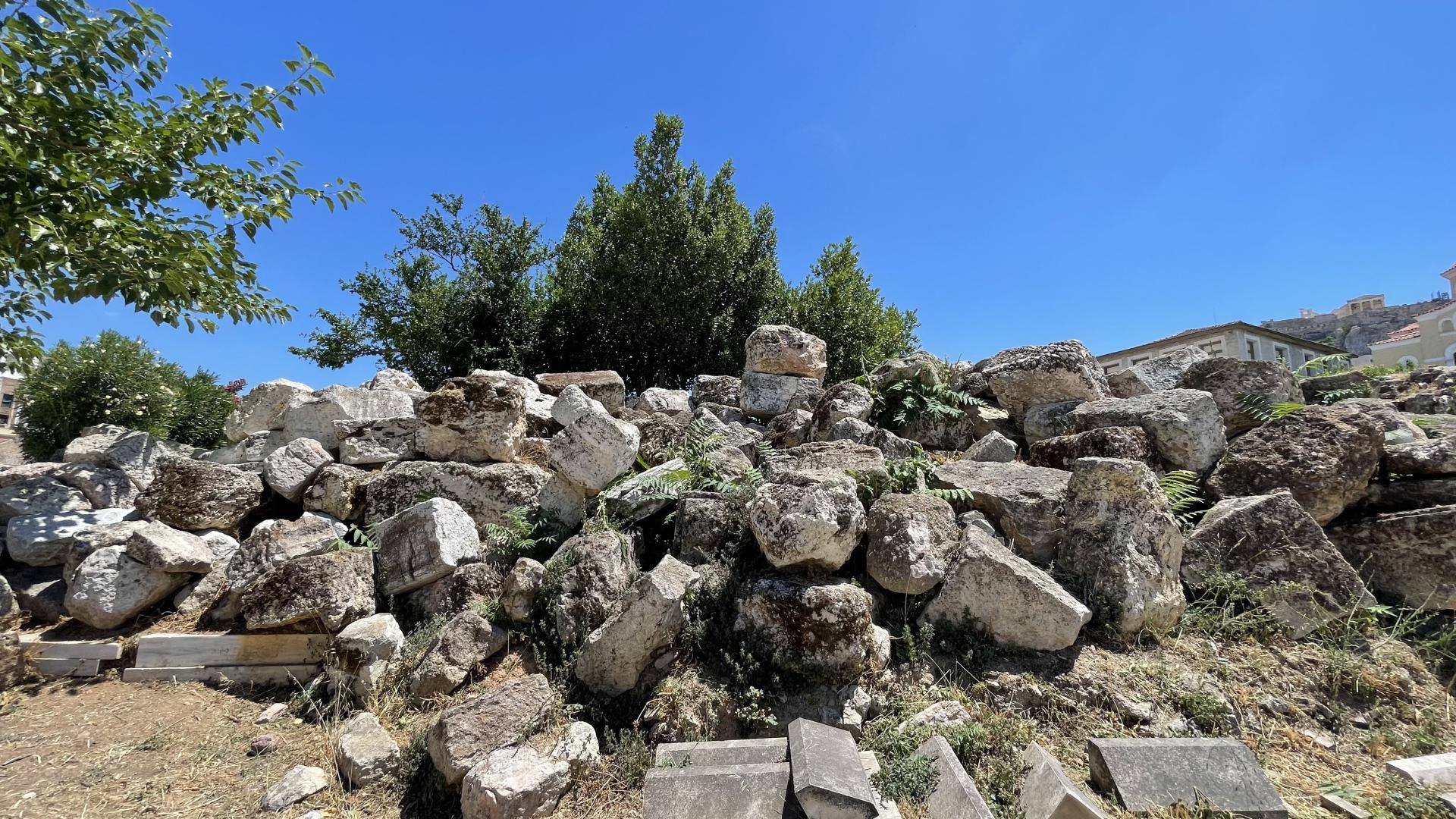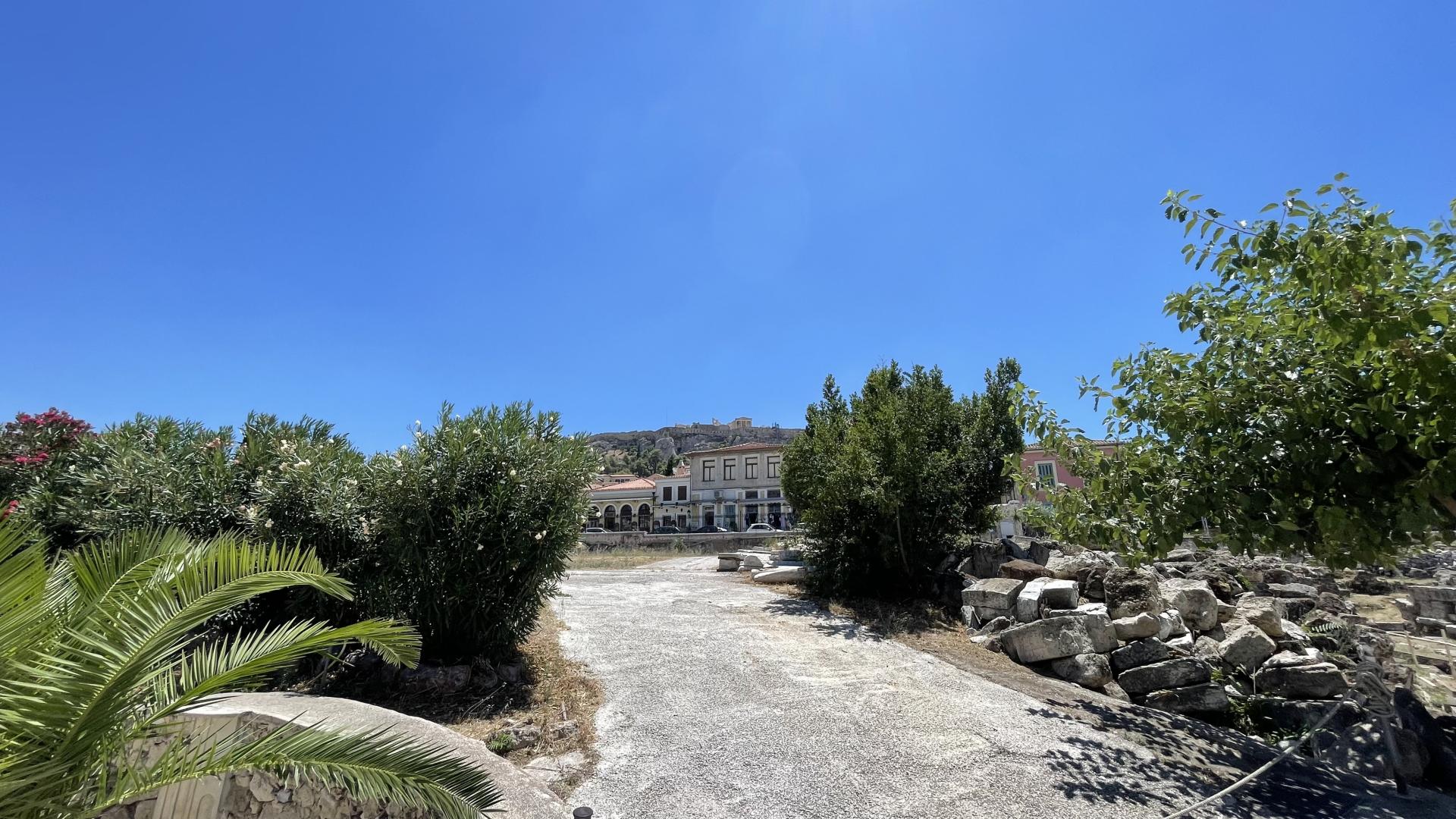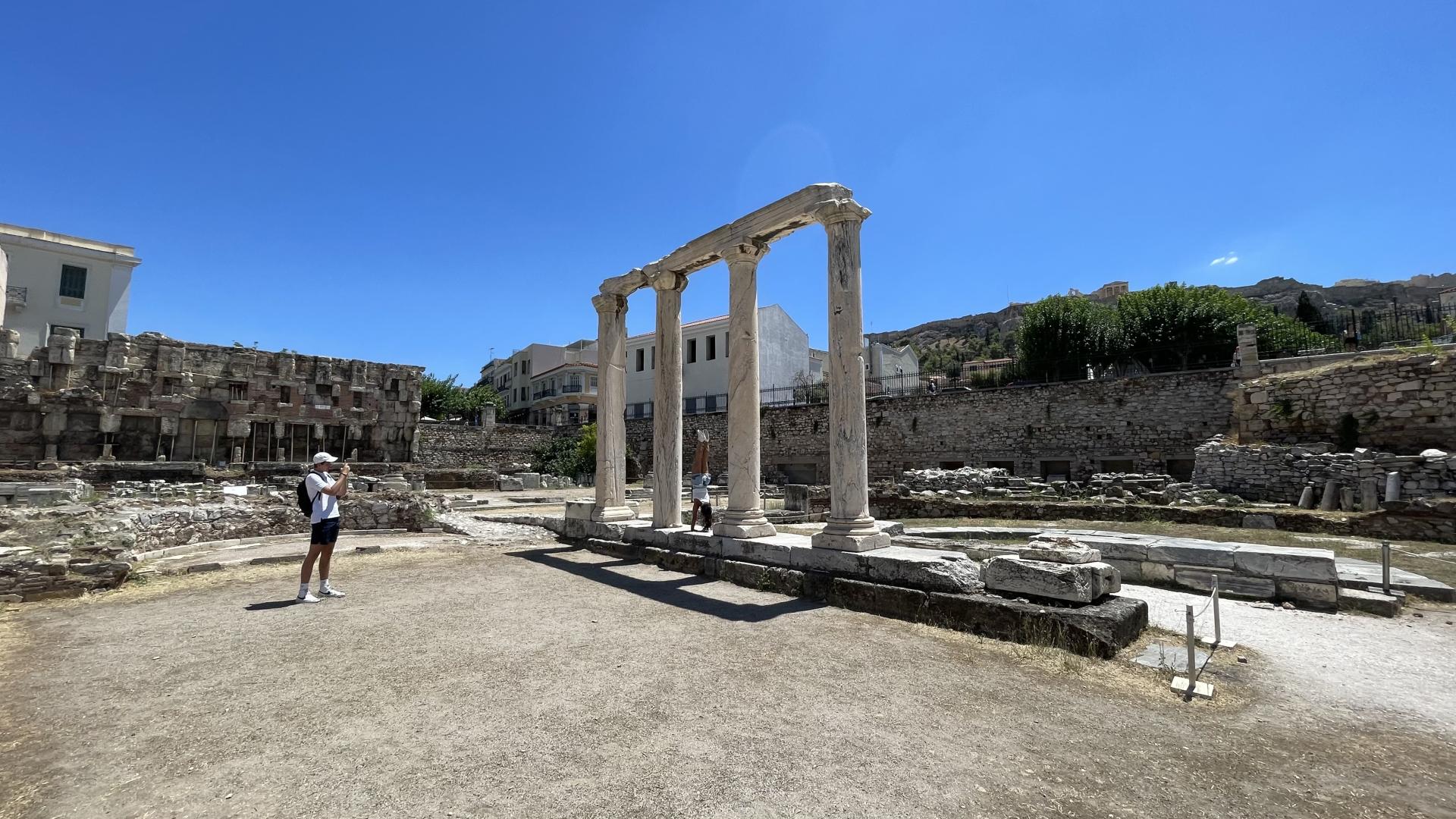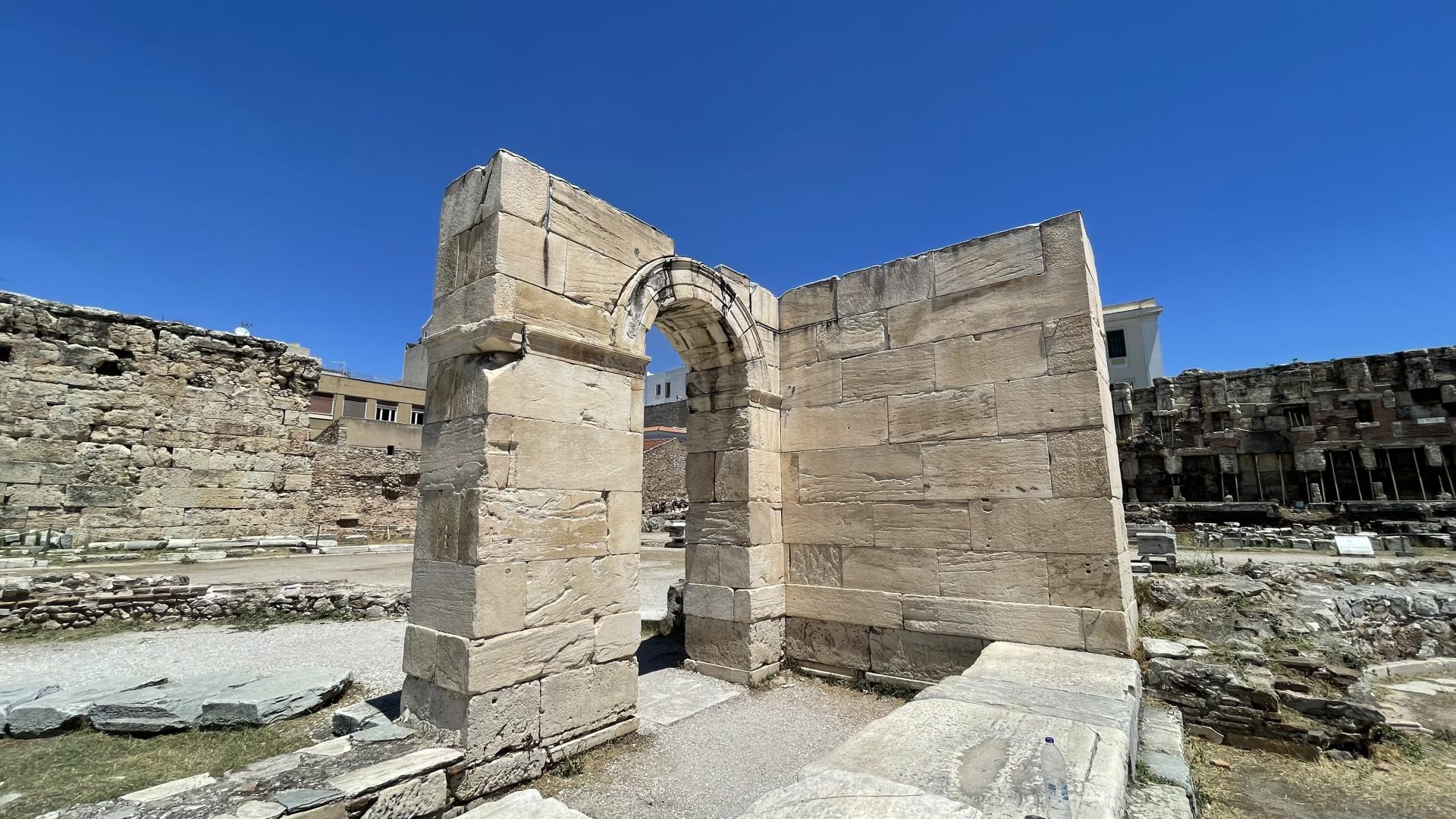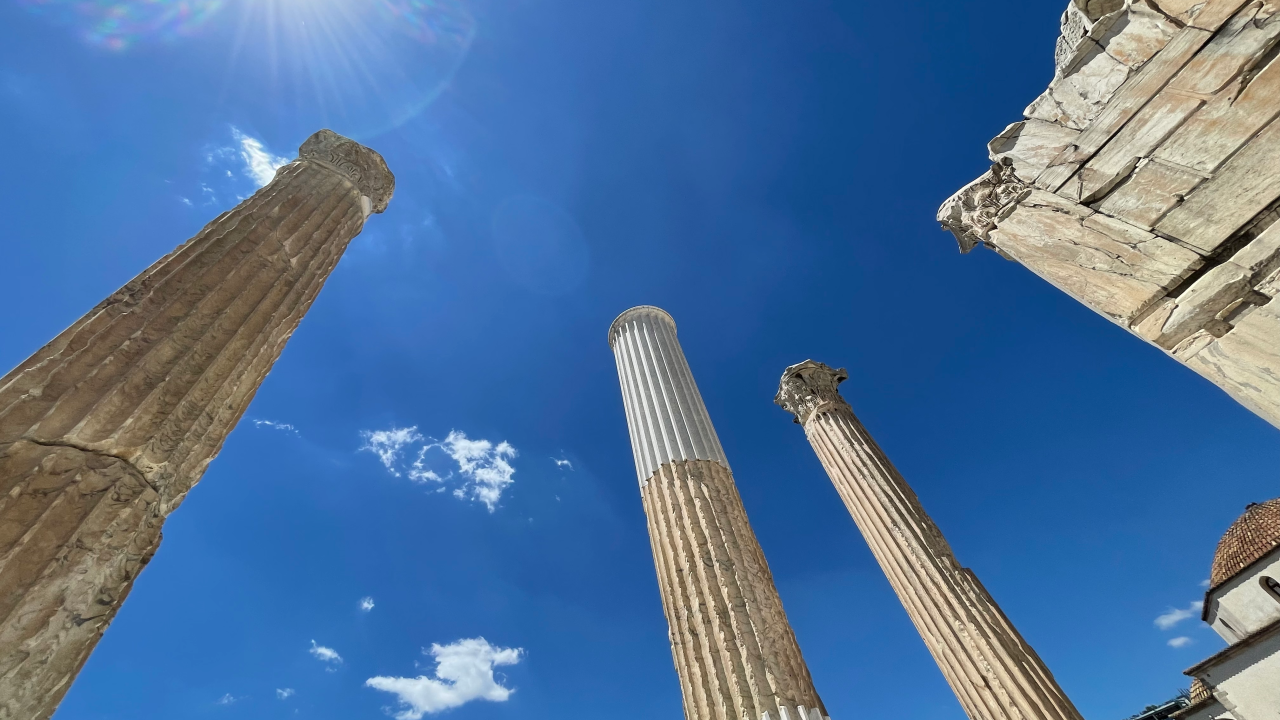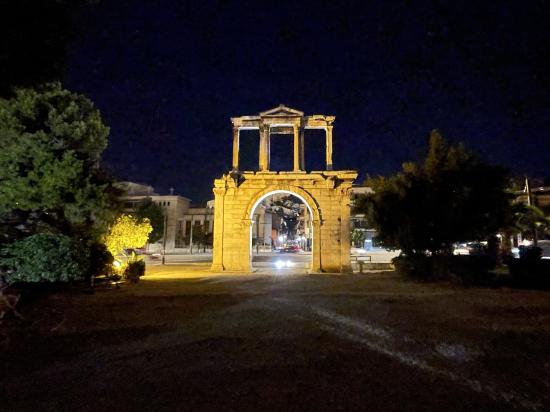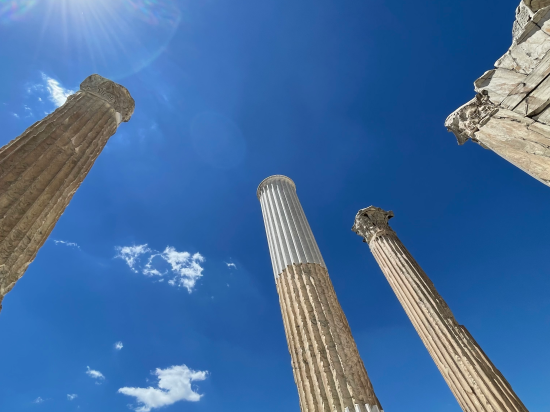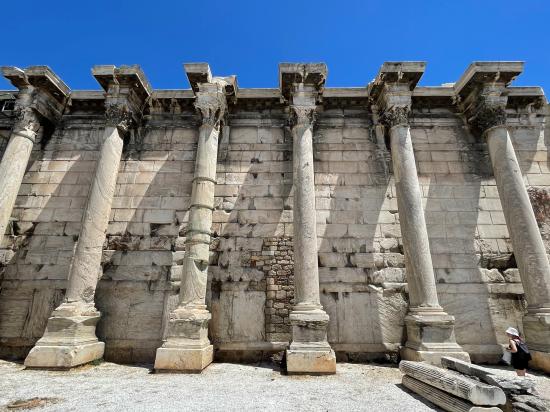The Roman Agora of Athens
The philosophers, legends and history of the archaic and ancient Greeks and of course - by Interpretatio Romana - the religion enthused and influenced the Romans in their every day lives. No wonder that from the times from the Republic to the Empire until the Late Antiquity, legions of senators, consuls and emperors wanted to make a lasting impression in the city scape of their most admired places and added their (land)marks on every possible occasion. Wether by finishing long dormant building projects as the Olympeion or by adding their own stoas, monuments memorial plaques or libraries.
The Roman Agora is probably one of the first historical monuments you will encounter when you visit Athens first. Of course, the Acropolis is - geographically - right in the center of the city. But it is built on a steep hill with dangerous cliffs everywhere and the Parthenon is not visible from deep down in the hustle and bustle of modern Athens.
If you want to take great pictures of the Acropolis from its best angle in the golden hour of dawn, just read this article.
Monastiraki is something like the city center of Athens and almost every tour, be it shopping, eating, going out or historical will start from there. So if you get out of Monastiraki subway station and turn around, you will fist see the huge remaining columns of the Roman Agora – and should be properly impressed. You will get used to ancient buildings and ruins everywhere in the city. It was built by Augustus in fulfillment of a promise from his adopted father Julius Cesar adjoining the original Agora.
The Roman Agora was built adjacent to the older Ancient Agora, which had been the main center of civic and commercial life in Athens since the 6th century BC. The new square was built on a larger scale and featured a number of monumental structures, including a large central courtyard, a colonnaded stoa, and a number of smaller buildings and shops.
The most prominent building in the Roman Agora is the Tower of the Winds, an octagonal clock tower that was built in the 1st century BC. The tower features a different weather vane on each of its eight sides, representing the eight winds of Greek mythology, and is considered one of the finest examples of ancient Greek engineering.
Other notable structures in the Roman Agora include the Gate of Athena Archegetis, a large gateway that served as the main entrance to the square, and the Fethiye Mosque, a 17th-century Ottoman mosque that was built on the site of a former Christian church.
Today, the Roman Agora is a popular tourist attraction and a fascinating glimpse into the history and architecture of ancient Athens. The site is open to visitors and offers guided tours, as well as informational displays and exhibits on the history of the Roman Agora and the city of Athens.
